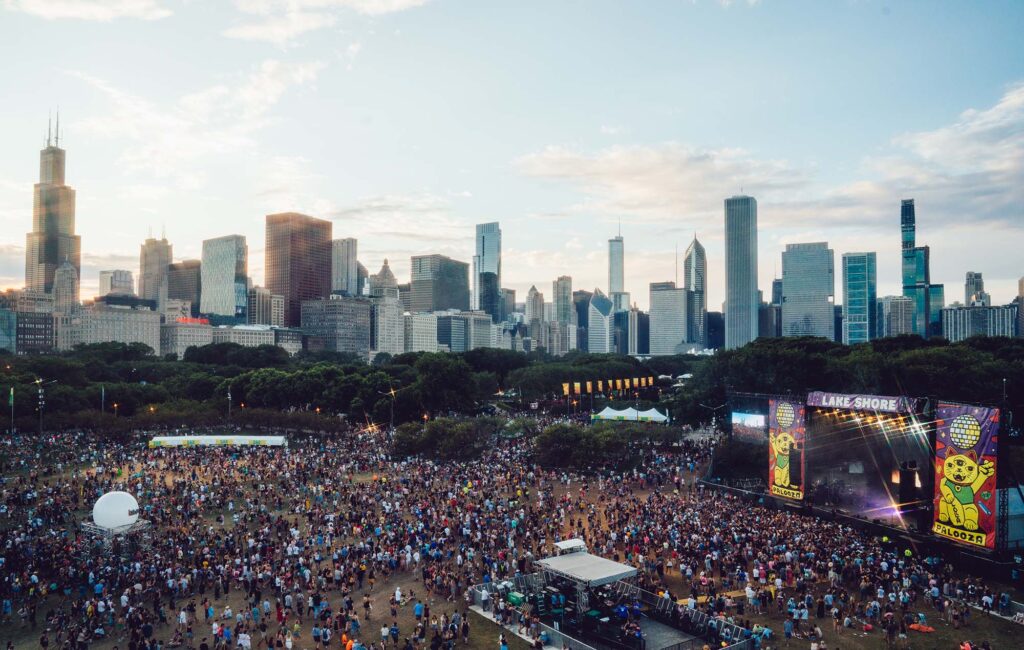Lollapalooza, the musical playground created by Jane’s Addiction frontman Perry Farrell in 1991, has evolved into one of America’s most notable music festivals. The Chicago mainstay — which is taking place from Aug. 3-6 in Grant Park this year — began as a multi-city farewell tour for Jane’s which featured acts like Nine Inch Nails, Rollins Band and Ice-T. Unbeknownst to Farrell at the time, the festival would be an immense success leading to the event becoming a yearly occurrence. Despite being cancelled several times due to financial difficulties, the festival found new life in 2005 and eventually became a four-day event in 2016. Before it officially kicks off this year, let’s revisit every epic line-up since Lolla’s inception.
1991
Lollapalooza’s modest but mighty beginnings are laid out perfectly in the inaugural festival line-up. It doesn’t get any more legendary than a bill featuring Jane’s Addiction, Siouxsie And The Banshees, Living Colour and Nine Inch Nails.

1992
The second annual Lollapalooza featured Red Hot Chili Peppers, who released their classic album ‘Blood Sugar Sex Magik’ just one year earlier. Pearl Jam, Ice Cube and Soundgarden also performed.

1993
Lolla kept pushing boundaries with its talent curation in 1993 by booking the likes of Primus, Alice In Chains, Fishbone, Dinosaur Jr. and Arrested Development.

1994
Nirvana were scheduled to headline Lollapalooza in 1994, but ultimately withdrew. Instead, the Smashing Pumpkins headlined alongside Beastie Boys, George Clinton and the P-Funk Allstars and A Tribe Called Quest.

1995
This year’s line-up consisted of Sonic Youth as a main-stage headliner as well as Hole (featuring a newly widowed Courtney Love). The late Sinead O’Connor also performed before leaving the tour early, as well as Cypress Hill and Pavement. The late Coolio, Moby and Superchunk appeared on the side stage.

1996
The festival leaned toward heavier musical stylings, with the likes of Metallica and Rancid gracing the bill in 1996. However, the festival was critiqued by fans for the absence of communal vibes that Lollapalooza was previously lauded for and what they believed was the growing presence of corporate sponsorships.

1997
This eclectic line-up featured burgeoning talents like The Prodigy, Snoop Doggy Dogg and Julian and Damian Marley. It would also mark the last Lollapalooza for six years due to the festival taking a break for financial reasons.

2003
Lollapalooza was revived in 2003 with headliners like Jane’s Addiction, Audioslave and Incubus. However, fans shied away from the event because of high ticket prices and the festival was cancelled the following year.

2005
In 2005, Lollapalooza had new financial backers and became a permanent Chicago fixture. Weezer, Arcade Fire and Pixies led the newly rebuilt festival, while acts like Death Cab For Cutie and Dashboard Confessional provided emo vibes.

2006
Kanye West headlined his hometown festival with surprise appearances from Common, Twista and Lupe Fiasco during his set. My Morning Jacket, Wilco and Sleater-Kinney also performed.

2007
A two-day format proved so successful in 2006 that in 2007 Lollapalooza transitioned into a three-day format. Farrell raged with his new side-project, Satellite Party, while Daft Punk made a rare appearance and Yeah Yeah Yeahs proved to be a formidable indie facet.

2008
Kanye West headlined again in 2008, while other acts like Radiohead and Nine Inch Nails were also fan favourites. Cat Power, The Kills and Saul Williams also performed.

2009
Arctic Monkeys reinforced their promise as indie darlings during this instalment of Lollapalooza, while Tool and the Yeah Yeah Yeahs were the split headliners for the same night. The Killers also brought all their hits to headline.

2010
This year brought a merging of multiple genres as pop princess Lady Gaga brought out her legion of loyal fans. Phoenix, The Strokes and Soundgarden also provided an array of fun sets.

2011
While music giants like Foo Fighters and Coldplay were valiant headliners, other acts brimming with promise like Crystal Castles, Cults and The Mountain Goats also put on unforgettable performances.

2012
This year’s line-up provided an up close and personal look at the enigmatic Frank Ocean while Jack White and Justice battled it out as headliners for the final night. Farrell also devoted a stage almost exclusively to EDM this year.

2013
The Cure performed for the first time at Lollapalooza, Chance The Rapper brought out the masses, Kendrick Lamar impressed onlookers and Skrillex and Boys Noize teamed up for their join act Dog Blood. An epic line-up, indeed.

2014
2014 marked a decade of Lollapalooza taking place in Grant Park, with the line-up being more rap-friendly than usual. Eminem headlined while acts like Outkast, Nas and Run The Jewels proved to be impressive additions. Lorde, Interpol and Childish Gambino also performed.

2015
Rock impresario Gary Clark Jr. showed off his sheer talent while the one and only Paul McCartney closed out the festival. The Weeknd, Florence And The Machine and FKA Twigs were also a pull for festival goers.

2016
This year marked the beginning of Lollapalooza becoming a 4-day festival. LCD Soundsystem, Radiohead and M83 topped the lineup, in addition to acts like Future, Danny Brown and Haim cemented their performative prowess.

2017
Lollapalooza welcomed back The Killers, Lorde and Chance The Rapper (whose entrance featured a video message from Michelle Obama). Liam Gallagher also performed, although those in attendance believed his attitude marred his performance. There was also the addition of a roller skating rink this year.

2018
Bruno Mars made his Lollapalooza debut (excluding an appearance during Eminem’s set in 2011) while St. Vincent dialled up the weird during her set. LL Cool J reminded attendees why he’s the greatest of all time and Lil Pump’s disastrous set–which featured the emcee arriving 30 minutes late and his DJ’s laptop overheating–went down in infamy.

2019
Lil Wayne fans showed up and showed out for their favourite emcee as Ariana Grande–one of pop’s biggest superstars–delivered hit after hit during her headlining set. J. Balvin also made history as the first Latino headliner in the history of Lollapalooza.

2020
Due to Covid, Lollapalooza at Grant Park was cancelled but offered a digital festival for free instead. Artists like H.E.R., Metallica and Paul McCartney delivered intimate virtual renditions of their most notable songs.

2021
The first Lollapalooza since 2019 did not disappoint. Miley Cyrus’ set was littered with guest appearances (Billy Idol, Juicy J, Wiz Khalifa), while artists like Flo Milli and Kim Petras gained a new legion of followers. Tyler The Creator and Foo Fighters also gave energizing performances.

2022
Punk gods Green Day closed out the 2022 edition of Lolla with an arsenal of hits that felt neverending. Dua Lipa gave it her all in a sequined jumpsuit during her energetic set, while Big Sean got the crowd going (and brought out then-pregnant girlfriend Jhene Aiko during his set). Metallica, who also headlined, brought out the thrashers again after all these years.

2023
Lollapalooza returns bigger and better than ever this year–and the line-up is monumental. Kendrick Lamar will bring the stylings of ‘Mr. Morale & The Big Steppers’ to Grant Park while Red Hot Chili Peppers prove why they are still headliner status four decades after becoming a band. 2023 also marks Tomorrow X Together becoming the first K-pop band to headline the original American festival.


